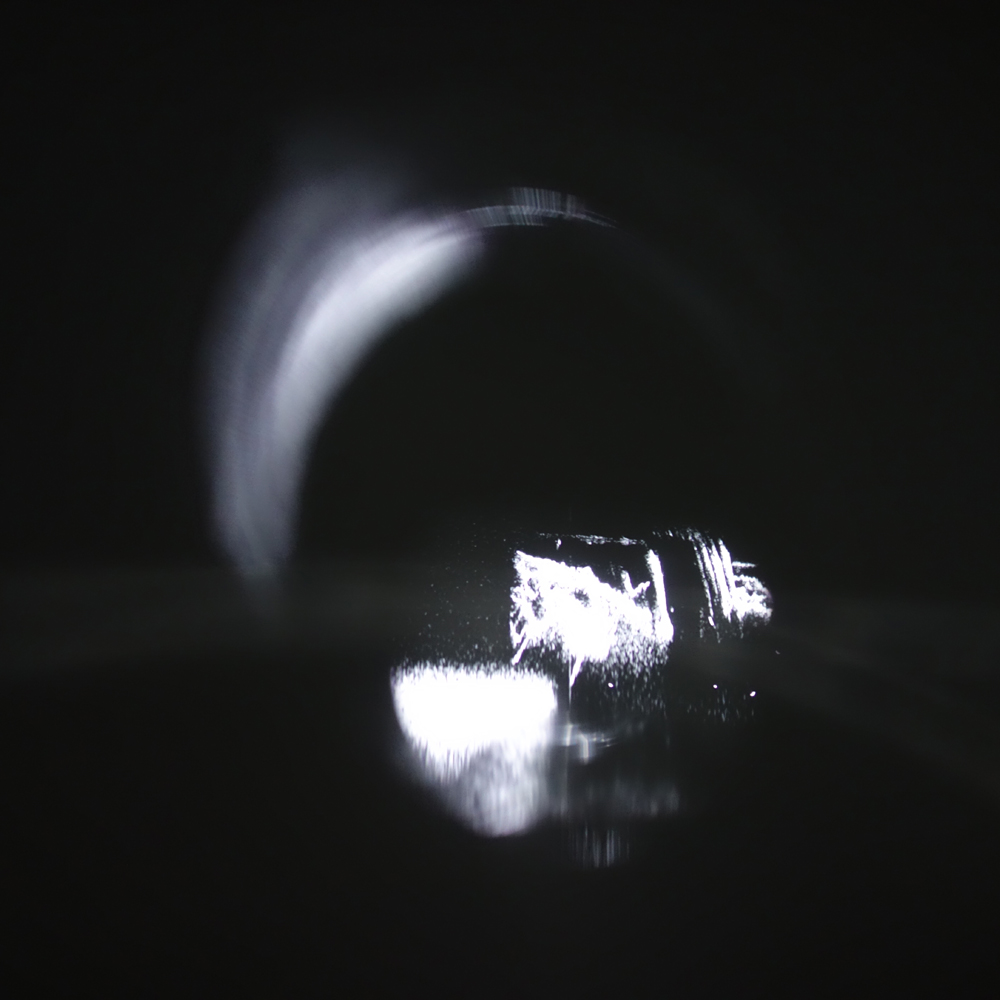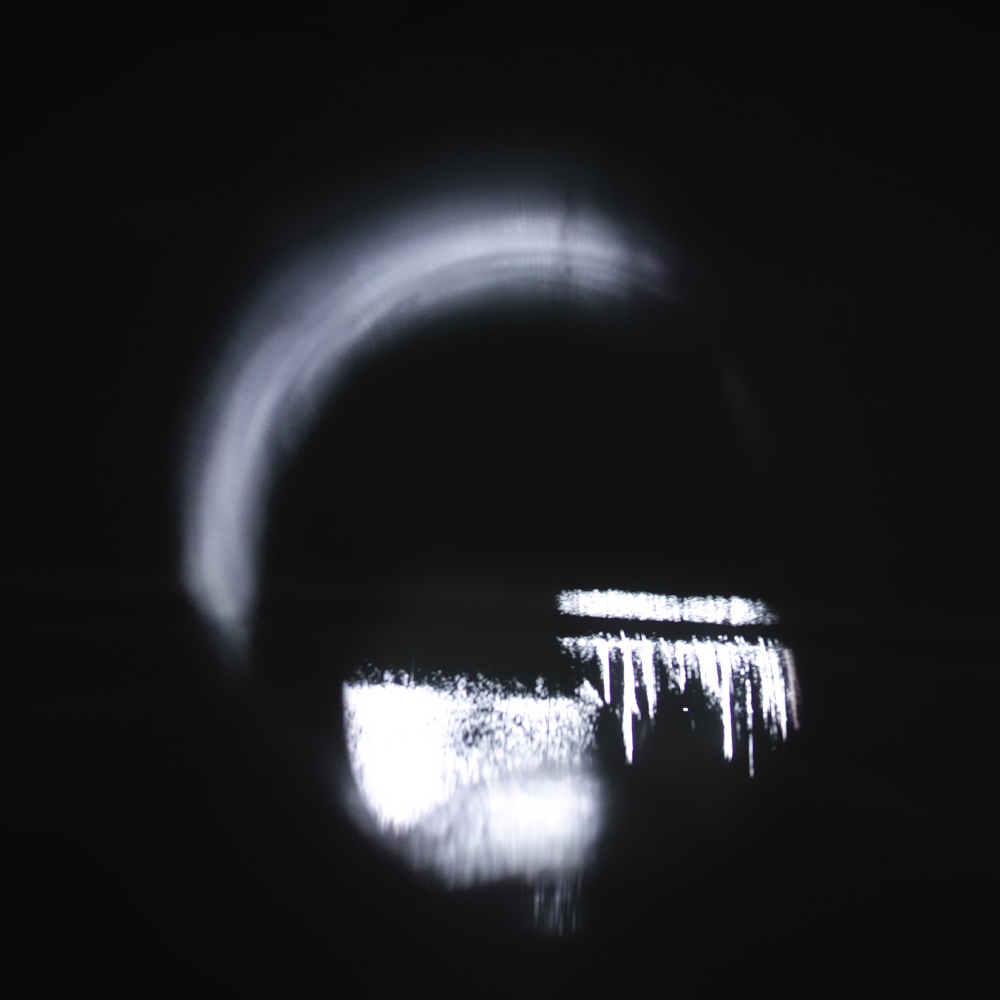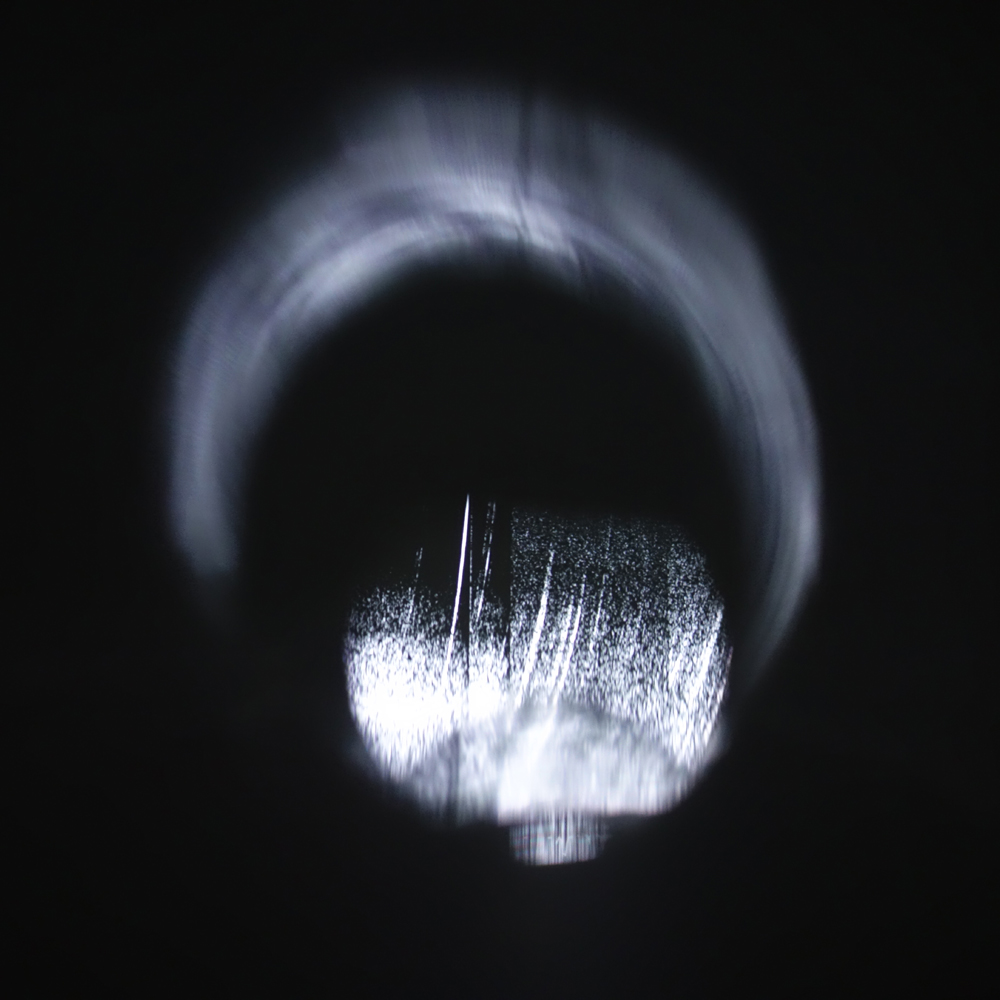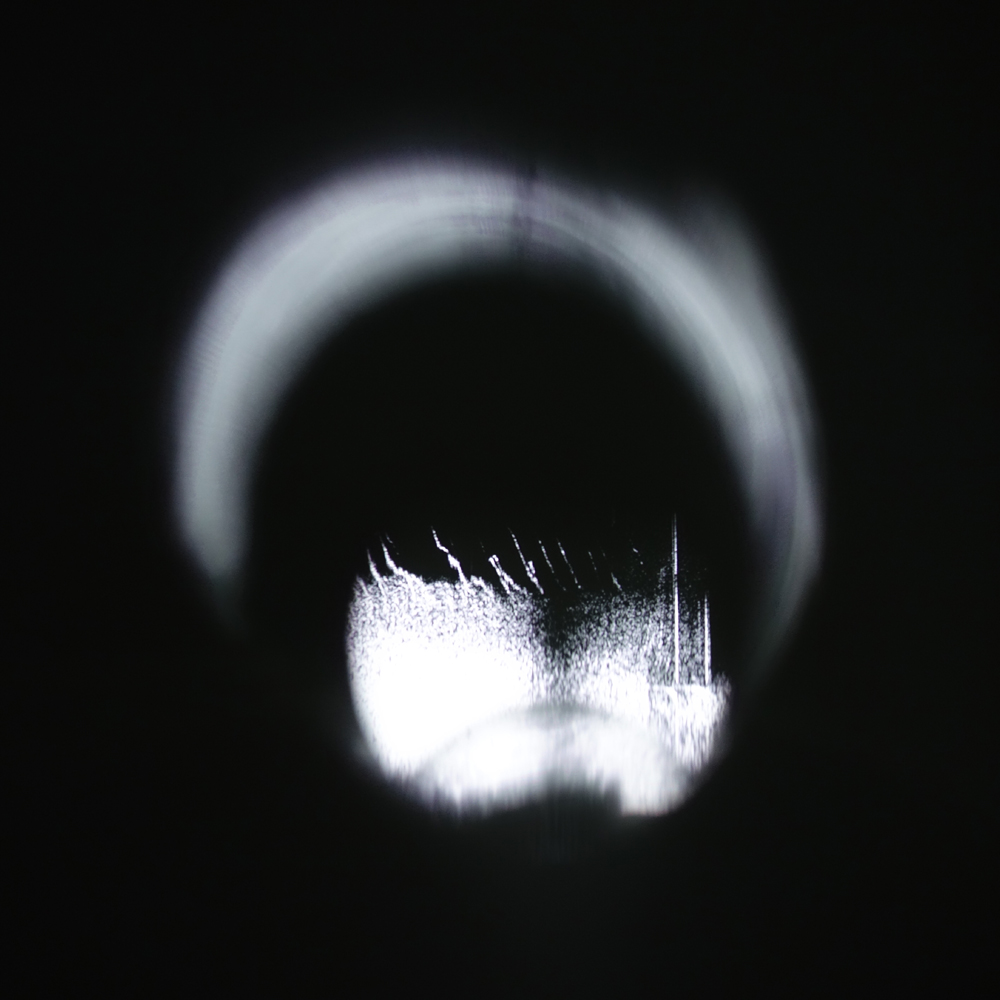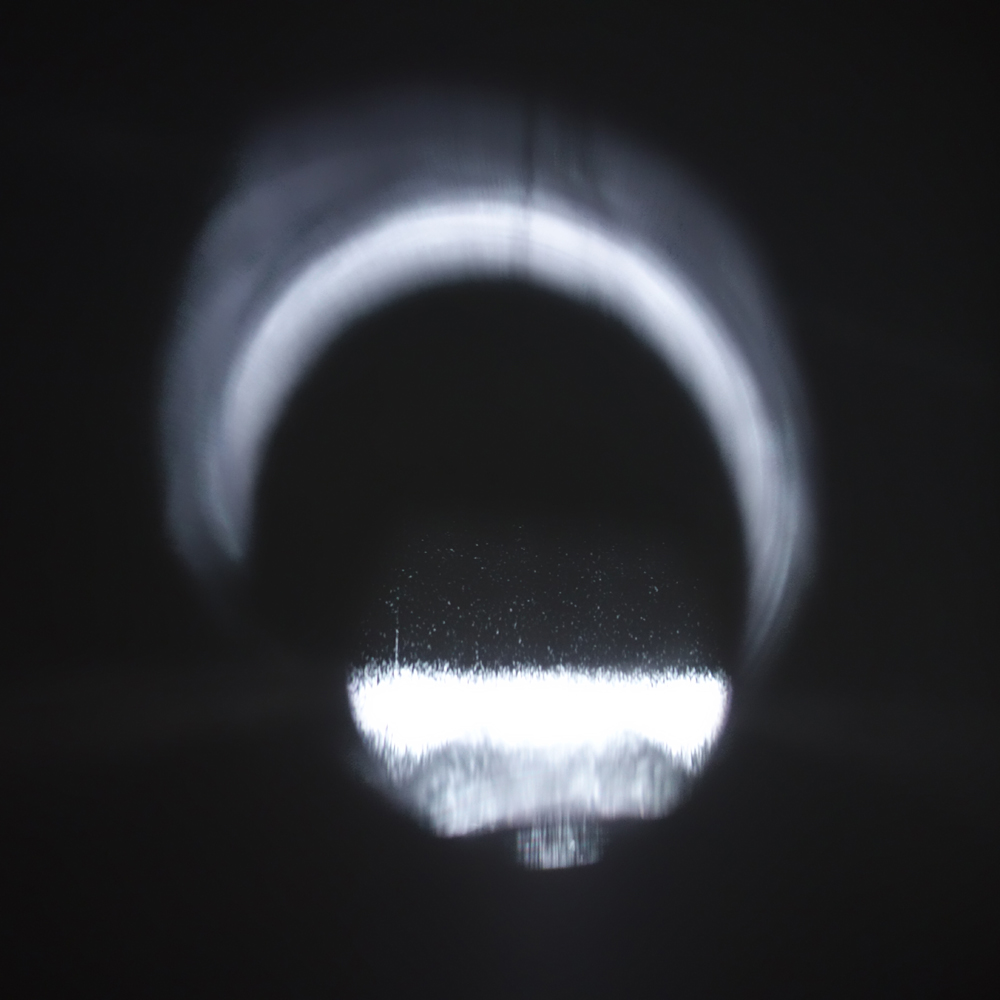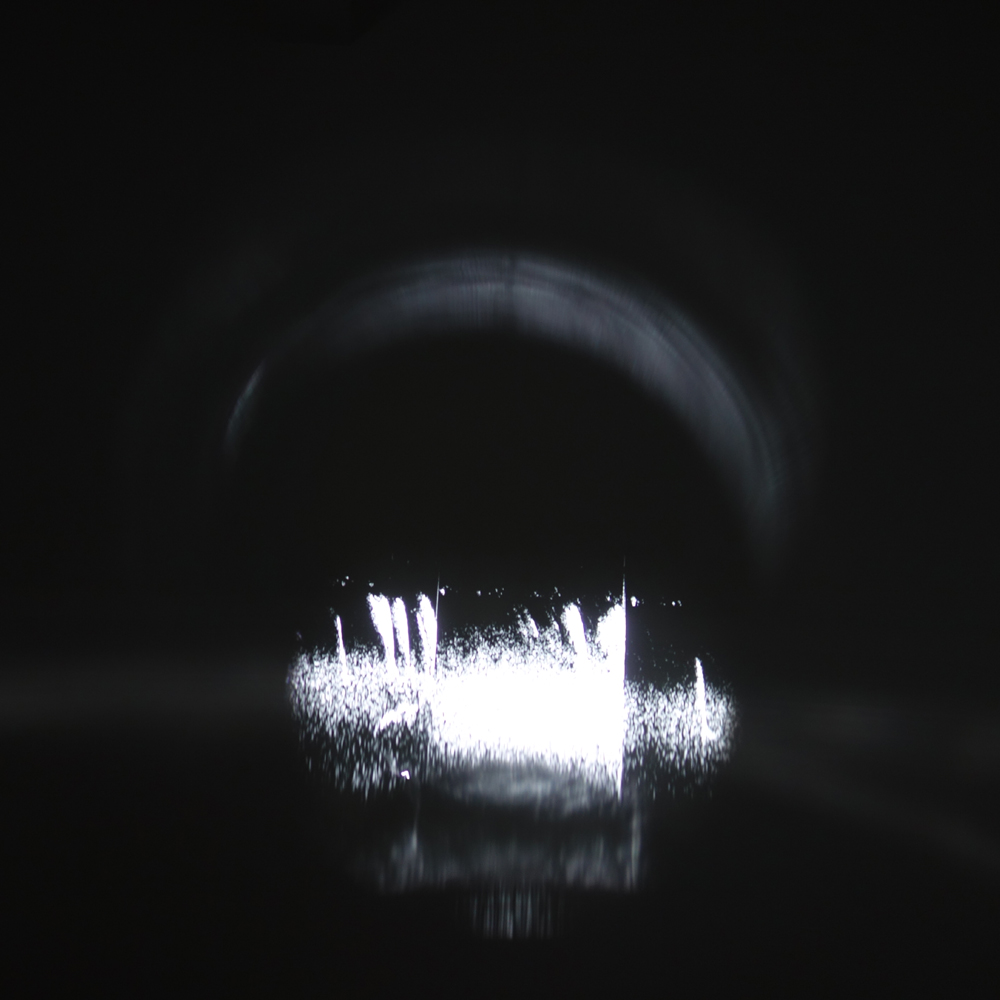In this installation magnetospheric plasma waves have been visualized by the sound emission analyzer Overtone Analyzer, and have then been partially refracted through a roughly-sawn acrylic tube into a revolving motion. These plasma waves were detected by two orbiting NASA Radiation Belt Storm probes, located within the magnetosphere between 60 to 36,000 miles from Earth. Plasma waves within the Radiation Belts are generated by highly charged electrons and protons that spiral along Earth's magnetic field lines. Some of these radio signals when received as sound are known as 'chorus waves', due to their similarity to the sound of a dawn chorus, and others are called 'whistlers' or 'proton whistlers'. Since 2012 this near real time monitoring of space weather has allowed better predictions of Radiation Belt storms for the safer passage of astronauts and spacecraft in future. Space weather is affected by the Sun and also influences our own weather: it is also the source of aurora in the night sky.
No sounds can be heard in space yet radio waves traverse this environment and can be picked up by receivers on Earth. Names are given to these plasma waves that relate to sounds within our sensory experience on this planet, yet these electro-magnetic phenomena are charged particles from the Sun responding to the influence of the Earth's magnetic field. This digital projection explores a parallel experience of light as sound, responding to the actual frequencies that have been received as radio waves. The visualizations of these sonic frequencies have then been refracted, through DIY adaptation, into the revolving, circular motion of interplanetary plasmas.
NASA audio files accessed at Space Audio
Factual information accessed through the
NASA website and Space Audio.
